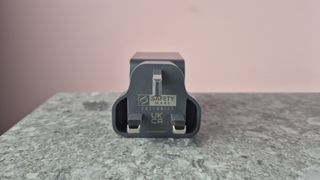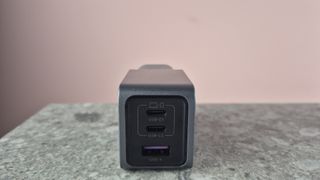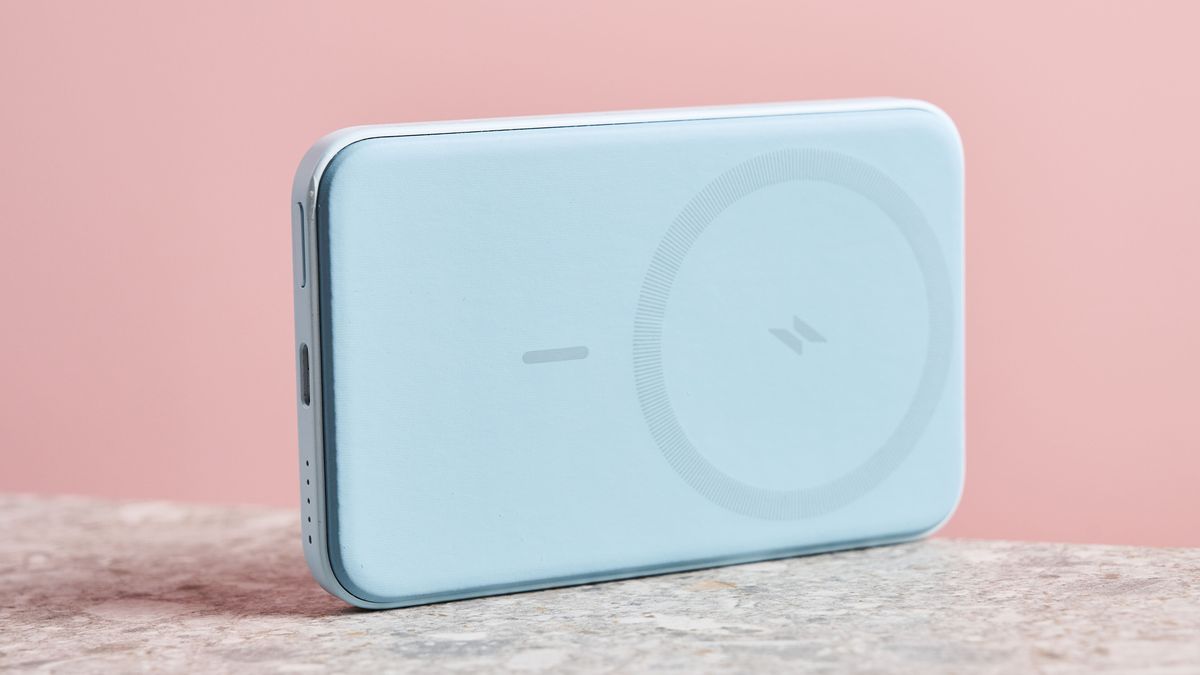UGreen Nexode Pro 65W 3-Port Charger review
If you want to bring multiple devices back to life at once, the UGreen Nexode Pro 65W Charger could be a good fit for you. This charger has three ports – two of which are USB-C and the other USB-A – and boasts a maximum total power output of 65W.
That 65W will likely be enough to access fast-charging on your handset, even with all three slots in use. That’s because the USB-C Port 1 has a solid maximum output of 45W when triple charging, with the other two able to provide up to 15W. If you’re hoping to get top charging speeds on three particularly power-hungry devices, though, this may not be quite enough power. Thankfully, there are stronger alternatives, like the Anker Prime 100W GaN Wall Charger (3 Ports), which boasts a higher total power output.
Actual charging performance is strong here, though. To test charging speed, I plugged the Samsung Galaxy S24 FE into USB-C Port 1, the Soundcore Space One Pro into USB-C Port 2 and the LG Tone Free T90S into the USB-A slot. Even with all three ports in use, the Samsung phone was able to go from 0% - 100% in the expected timeframe of approximately 80 minutes – that’s what you’d expect from some of the best iPhone chargers and best Android phone chargers.
On top of that, this charger is pretty small in size – it doesn’t protrude too far out of a socket – ideal if you’re working with a tight space. That’s in part, thanks to the use of GaN technology, which offers improved energy efficiency and a more compact build than typical silicon chargers. One issue I did have design-wise, however, is that the plug’s prongs are not foldable. So, if you want to slip the charger into your pocket, you may feel the prongs poking into your side – that’s not ideal. In addition, the look of the UGreen Nexode Pro 65W is perhaps not the prettiest. The main body of the charger is an attractive silver cuboid, but the adapter on the front appears somewhat shoehorned on – resulting in a slightly awkward look.
Overall, though, this is still a solid quality, fast-charging plug. OK, its list price of $55.99 / £44.99 (about AU$85) is admittedly quite steep – especially given the very similar, but non-GaN Anker 335 Charger (67W) is just $35.99 / £36.99 (about AU$55) and it comes with a USB-C to USB-C cable. But again, the UGreen Nexode Pro 65W 3-Port Charger will almost certainly please you performance-wise – just don’t expect class-leading value or design.

UGreen Nexode Pro 65W 3-Port Charger review: Price & specs
Swipe to scroll horizontally
| Price | $55.99 / £44.99 (about AU$85) |
| Total power output | 65W |
| Number of ports | 3 |
| Port type(s) | 2x USB-C; 1x USB-A |
| Dimensions | 2.1 x 1.6 x 1.3 inches / 53.3 x 40.6 x 33m |

Should I buy the UGreen Nexode Pro 65W 3-Port Charger?
Buy it if…
You want to charge multiple devices at once
This charger has three ports so you could charge your phone, laptop and tablet all at once – or any devices you have for that matter. With a total power output of 67W, you should have more than enough to access fast-charging on most modern handsets, even if you’re juicing up another two devices alongside it.
You want to use USB-A and USB-C cables
A lot of smartphones in the last few years have come with USB-A to USB-C charging cables. If you still want to make use of yours rather than being confined to USB-C to USB-C alternatives alone, this is an option worth considering.
Don't buy it if…
You want ultimate portability
Although the actual charger is pleasingly compact – in part thanks to the use of GaN technology – its prongs aren’t foldable. That’s not ideal if you want to slip the charger into your pocket, as the prongs can poke into you. Thankfully, there are tons of chargers from UGreen itself, Anker, and many more that opt for a foldable design – far more practical and portable in my view.
You’re on a tight budget
If you want a triple-port charger but don’t want to spend quite so much, fear not – there are some other strong alternative options out there. For instance, the Anker 335 Charger (67W) has a list price of $35.99 / £36.99 (about AU$55) but offers a slightly higher maximum power output and the same port configuration (2x USB-C; 1x USB-A). More on this below…
UGreen Nexode Pro 65W 3-Port Charger: Also consider
Anker 335 Charger (67W)
If you’re looking for a cheaper option that still packs a decent amount of power, the Anker 335 Charger (67W) could be a better option for you. You get three charging ports, but also a USB-C to USB-C cable and foldable prongs – adding a lot of value. This doesn’t use GaN technology, so it’s not as hi-tech or small-bodied as the UGreen Nexode Pro 65W, though. Read our full Anker 335 Charger (67W) review.










 English (US) ·
English (US) ·